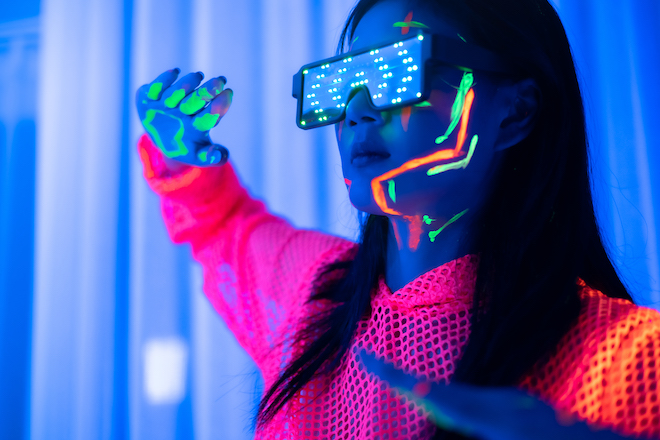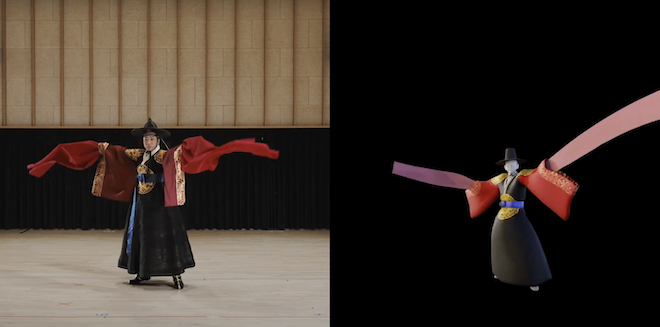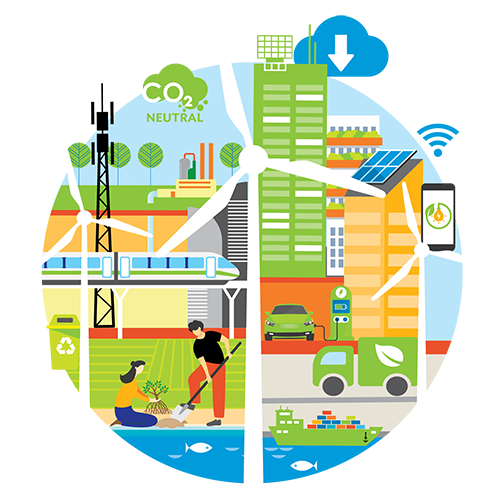
This article is published in collaboration with The MeshMinds Foundation.
Technological frontiers are ever-expanding, revolutionizing how we work, think, and connect with others. Within the realm of digital technology, the metaverse has become an increasingly common buzzword, dominating the conversation on what the future of the internet might look like. The term “metaverse” is accompanied by words such as “web3,” “blockchain,” “NFTs,” and more. These blossoming conversations still elude many, who struggle to understand and comprehend what the metaverse—and its associated terms—truly mean. Beyond its definitions, however, it is worth considering the potential risks and benefits of the metaverse.
As a region, Asia has been at the forefront of digital adoption, with a social media penetration rate of 72%. In the last 2 years, approximately 70 million people in Southeast Asia alone have joined the digital realm via a connected device. Let us demystify the metaverse and explore its implications and opportunities in Southeast Asia.
What is the metaverse, really?
Simply put, the metaverse transforms the internet from a purely two-dimensional experience to one that is immersive. In doing so, it brings the internet closer to our everyday senses and gestures. Whereas today we might scroll through our Instagram feeds or watch Youtube videos on our various devices, in the metaverse our virtual avatars will be able to meet with others and navigate a three-dimensional virtual world, interacting with information, media, games, and more. Frontier technologies, such as augmented reality (AR) and virtual reality (VR)—which together are also known as extended reality (XR)—are entry points to the metaverse. People typically use XR devices to connect the real and virtual worlds.
Accenture brings this concept to life with its outline of what a property purchase might look like in the metaverse. With frontier or XR technologies, people could be immersed in a virtual property viewing without needing to be physically present. Similarly, they would be able to buy property with cryptocurrency, and all documentation would be stored on the blockchain.
Essentially, the metaverse is about taking the existing digital experiences that we habitually access using “flatscreen” laptops and smartphones, and transforming them into immersive 360-degree virtual worlds accessed initially using today’s hardware and increasingly futuristic wearable devices that are currently in development. As these digital experiences are developed and become more commonplace, the metaverse is set to revolutionize nearly all aspects of life and work. Just as people were empowered at the dawn of Web 2.0—also known as social web—to create spaces on social media for their own interests and goals, there will likely be various metaverses that reflect those who create and interact within them.
For those in Southeast Asia, the questions that inevitably arise are: what are the implications of the metaverse on the region? How is Southeast Asia getting involved in the metaverse, and what are the metaverse opportunities out there?
The metaverse and Southeast Asia
Although many associate futuristic devices such as VR headsets with the metaverse, in reality, a smartphone or laptop can be used to access the metaverse. Southeast Asia boasts a high rate of smartphone usage. As of 2022, nearly 9 in 10 internet users in Southeast Asia will use smartphones. In a survey of 6,000 individuals across six Southeast Asian countries, an average of 72% had positive feelings toward the metaverse. The high level of connectivity, coupled with the general excitement toward the metaverse positions the region as a prime location for the development and use of the metaverse.
The metaverse has secured the buy-in of various key players, from gaming companies like Viet Nam’s Sky Mavis, to governments such as the Provincial Government of Jakarta. The wide variety of stakeholders is testament to the versatility of the metaverse. Sky Mavis is integrating non-fungible tokens or NFTs and cryptocurrency into its gaming mechanisms. Jakarta is seeking to use the metaverse to reinvigorate the regional economy and realize its vision to develop the city with accessible and high-quality public services.
Beyond its great potential in transforming the world of business, the metaverse also stands to revolutionize ways that we teach people about the importance of protecting our culture and the environment. XR technology can be used to create immersive experiences that communicate to a young, digital-first audience the importance of social causes, particularly cultural preservation and climate action. For an audience that is increasingly consuming news and searching for information using hashtags on Instagram and TikTok, having a robust and varied communications toolkit is becoming imperative to engage and incentivize ordinary citizens to act for the common good.
Here are some ground-breaking AR and VR experiences across various fields made by leading organizations and creative technology agencies in Asia:
Future of cities
As more countries move toward creating smart cities that improve the quality of life of its residents, we see the metaverse taking centre stage in these transformations.
Singapore-based Vizzio Technologies created a digital twin of the city of Singapore, creating a seamless 3D experience for users.
Similarly, CAD Center in Japan created 3D maps of Osaka and Tokyo, using state-of-the-art software to create immersive experiences.
The use of frontier technologies is not limited to large-scale projects such as digital twins of cities, but can also be used in spaces such as museums and commercial spaces. For example, SPEED3D, a creative tech studio from Taipei,China, developed an AR map for the National Design Center for Traditional Arts, which gives users access via a QR code. Upon scanning, the effect guided the user through the different activities that were happening at the National Design Center.
Healthcare
VR is increasingly used in the treatment of a variety of medical conditions.
Mind Palace VR by Singapore creative tech studio Dude.SG is one such experience designed to help dementia patients with their memory and connection to their loved ones.
At the National University of Singapore's Yong Loo Lin School of Medicine, staff members and students are creating a VR program to teach medical and nursing students how to manage agitated patients. By enabling students to take part in a role-play situation, the VR training is the first of its kind to focus on the practice of communication skills and physical restraint tactics in situations where an agitated patient needs to be managed safely and effectively.
Education
VR also enables immersive active learning, a teaching methodology that involves students’ active attention and participation. Such pedagogical methods allow students to better retain information, as opposed to traditional methods which are largely passive.
Companies are bringing world heritage sites to students through VR technology. Using the 3DExperience platform, French software firm Dassault Systemes recreated UNESCO World Heritage sites around the world as virtual twin experiences which are accurate and 3D-simulated time capsules. Such platforms democratize education to the students all over the world and help preserve history.
In the realm of AR, Singapore is leading the charge by giving secondary students in Infocomm Media Clubs access to Spark AR from Meta and Reality Composer from Apple. MeshMinds has been working with the Singapore government to offer a series of week-long bootcamps in which students are being introduced to the world of AR to create their own interactive AR filters and effects that are focused on the protection of our culture and the environment.
Environmental communications
Frontier technologies are increasingly being used to create immersive experiences that show than tell how human-caused activities are harming the environment. This is a field where MeshMinds has been working with the United Nations.
Designed as an AR experience, Ecosphere AR transports the target audience to the mountains of India, the mangroves of Thailand, and the coral reefs of the Philippines. The campaign was launched via Instagram. Through the AR filter we developed with fellow Singapore tech studio Metamo Industries, users could interact with the environment and learn about the problem and the individual action that could help combat the triple threat of climate change, loss of nature, and pollution these ecosystems are facing. The filter also allowed users to reimagine, recreate, and restore the three ecosystems.
We also developed a campaign to discourage people from using single-use plastics with Shadow Factory, a creative tech studio based in Hong Kong, China. Using AR, we developed an experience that gamifies the call to action to beat plastic pollution.
A campaign we developed with fellow Singapore creative tech studio GOWAAA also used AR to create an underwater experience and game filter that invites players to pick up marine litter.

Art and culture
Frontier technology has also allowed users to reimagine the ways they engage and interact with art and culture.
Working with Facebook parent Meta, we created a set of AR experiences designed to bring to life traditional Korean dance, Minhwa painting, and music.
In Singapore, we worked with the National Arts Council to create an AR art trail focused on making artworks on the rail network interactive to entice more people to take public transport.
We also worked with online fashion retailer NET-A-PORTER to educate people about the importance of sustainable fashion using AR.
Work in progress
Although the metaverse has dominated many tech conversations in recent times, it is still very much a work in progress. These mainstream conversations and reflections will shape how we build the metaverse and how users will experience it. The next dimension of the internet will allow us to be transported to virtual realms that make us feel better connected with each other and offer more meaningful experiences. We see the real world in 3D and now advances in internet speeds and blockchain technology mean that we will be able to experience the virtual world in more realistic and fantastical ways.
We must remember that the challenges we presently face in keeping the two-dimensional internet safe and accessible will similarly confront us in the metaverse. As future users who will shape and be shaped by the metaverse, it is our responsibility to build virtual worlds that are inclusive, accessible, and safe for all. At the heart of web3 will be creators, in much the same way as YouTube and Instagram and TikTok would be nothing without their creator communities.
It is clear that the metaverse has immense potential in Southeast Asia. The question is: What will Southeast Asian creators choose to build to realize its potential?
 Kay Vasey
Kay Vasey
Founder, MeshMinds Foundation
Kay Poh Gek Vasey is also the chief connecting officer at MeshMinds, the foundation's sister company which also operates as a creative technology studio. Kay spends her days bringing together the worlds of art and technology. She believes in the power of artists to inform conversations and inspire positive actions that result in measurable impact for a better world.


